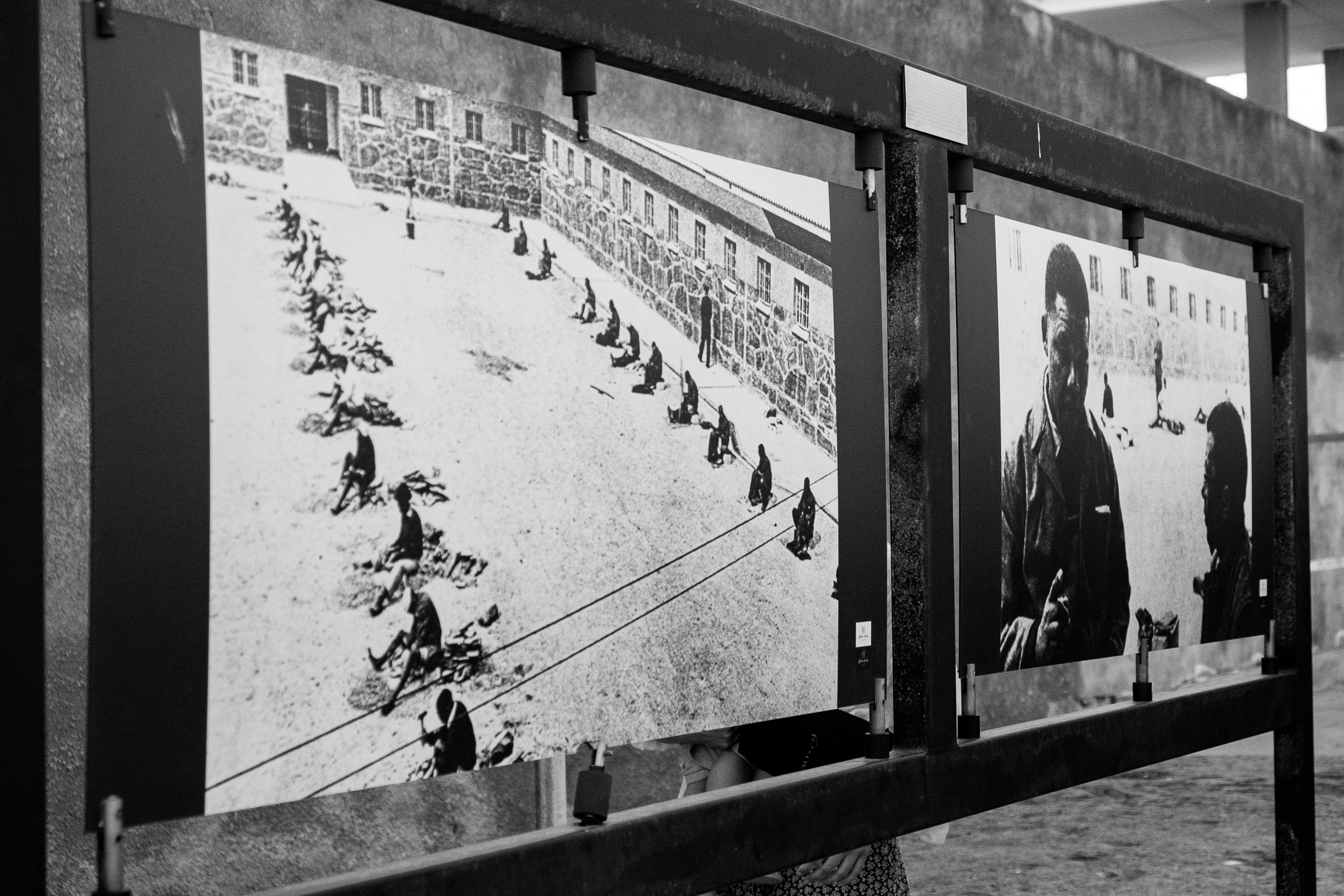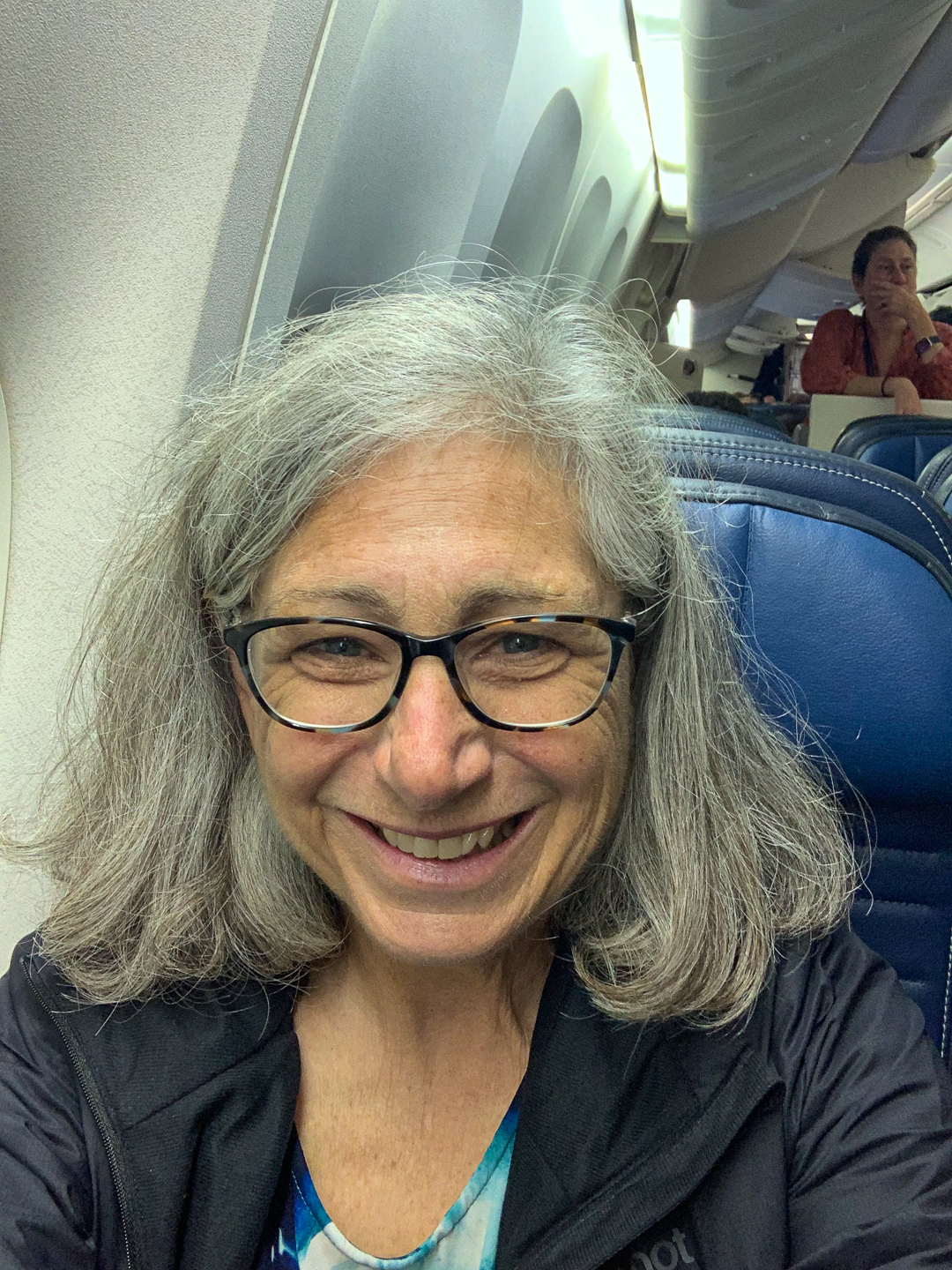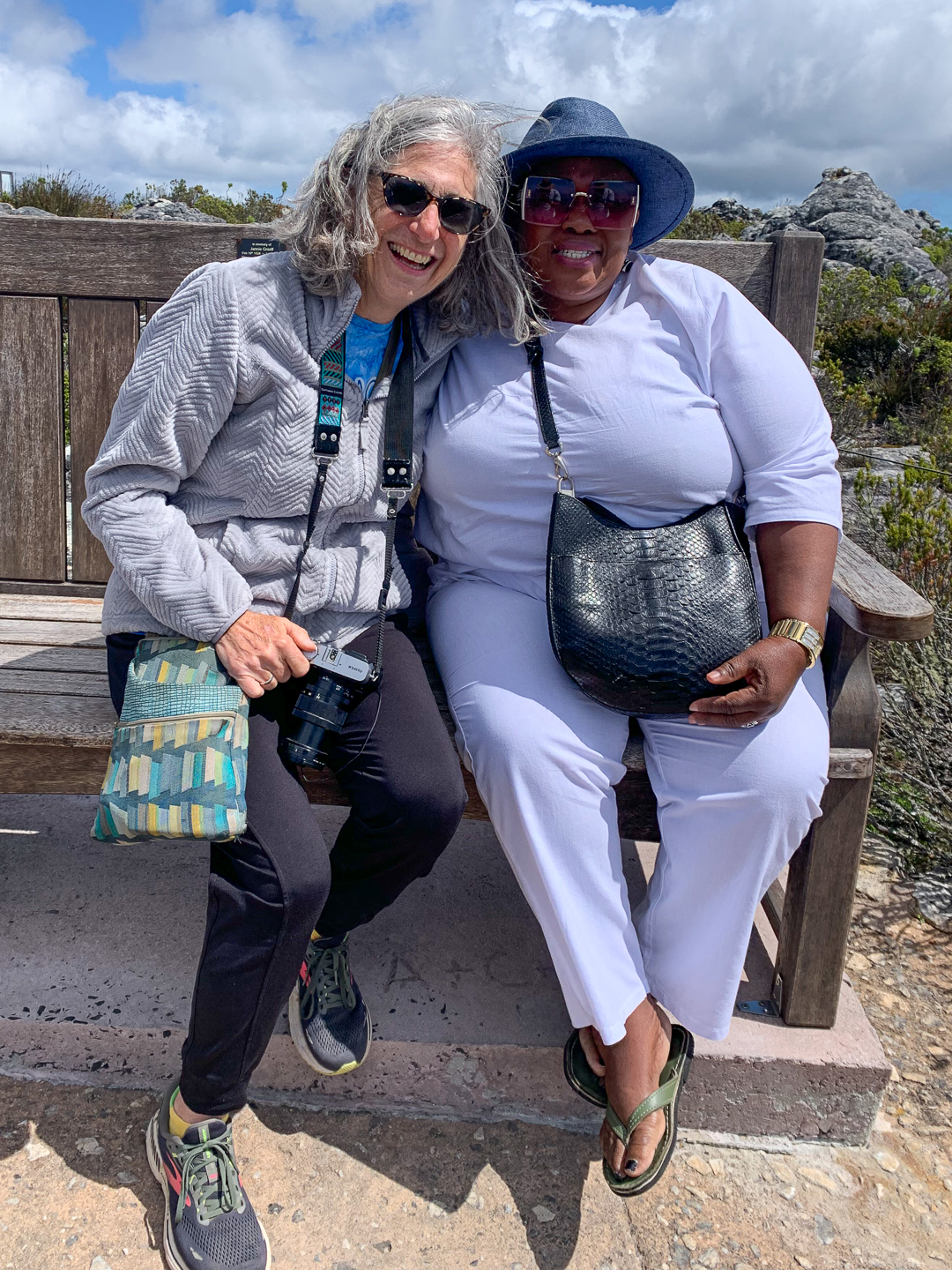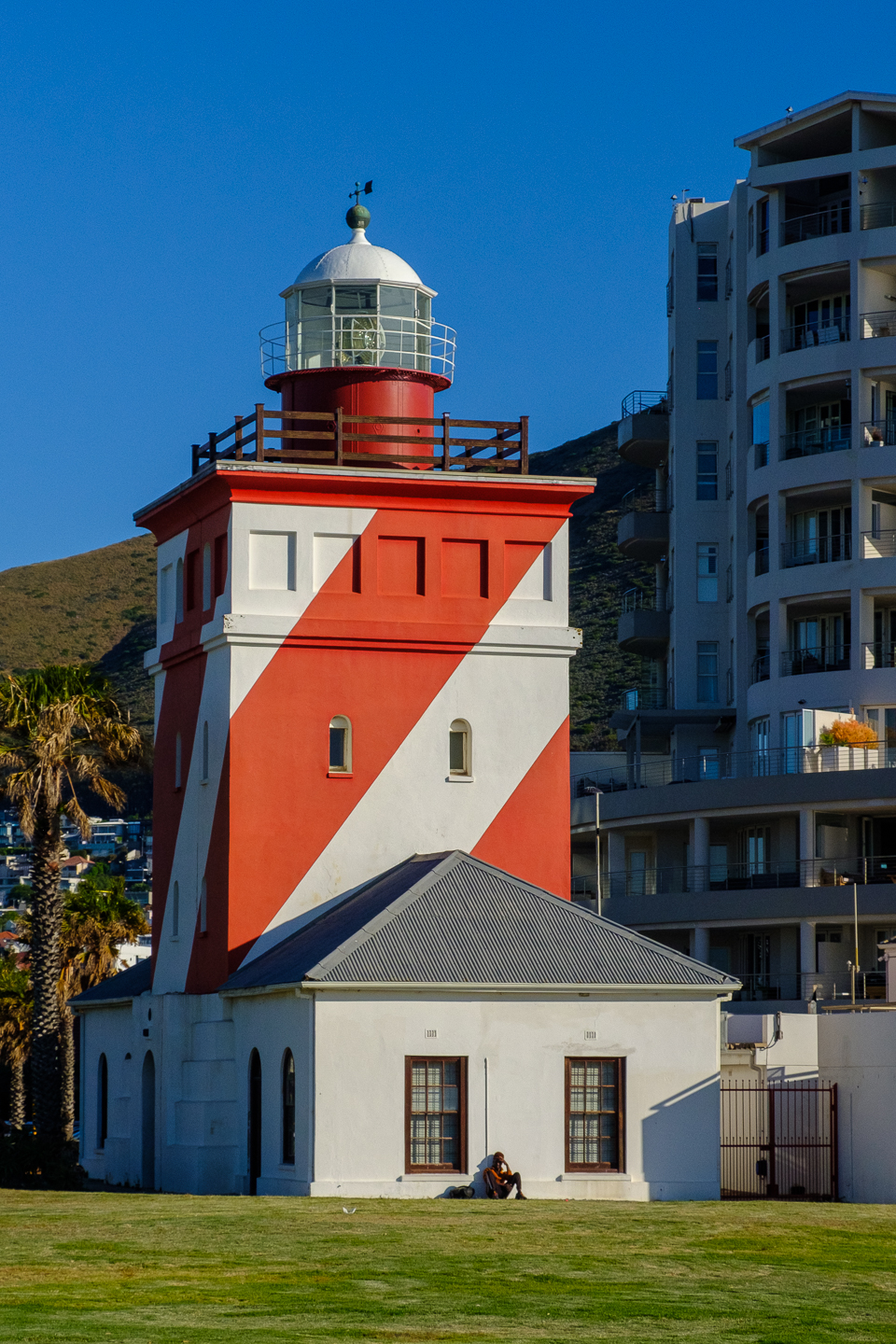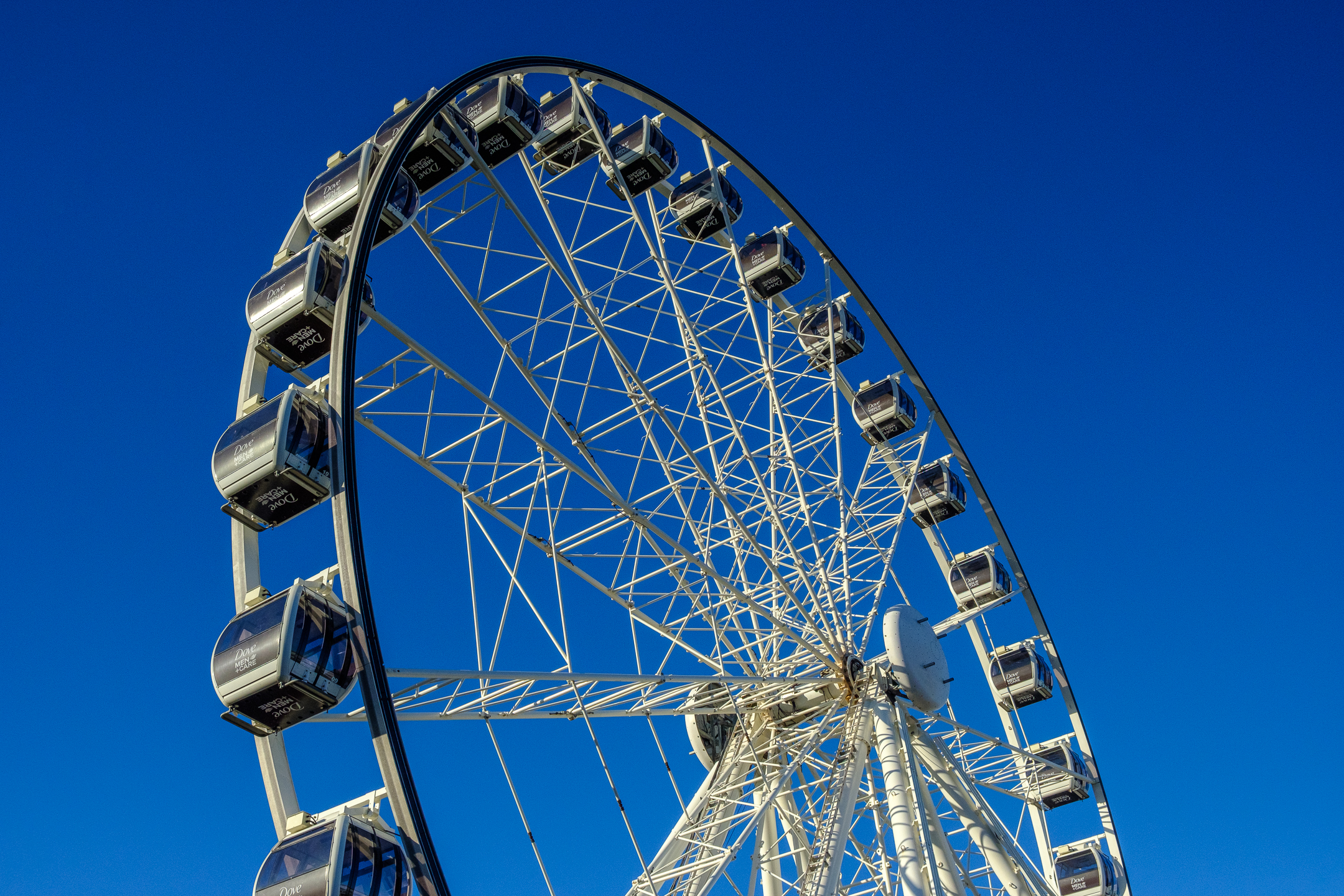I wasn’t planning on a private city tour.
Last night, I did my prep work: I researched on Google what I hadn’t seen that I wanted to see, mapped out my walking route, and downloaded a couple of audio walking tours.
This morning, though, I spoke with my hotel concierge who told me it wasn’t safe for me to walk my planned route. He called a cab for me; the driver is also a tour guide. I showed my guide, Owen, what I had already explored in Cape Town and what I had hoped to see – all by 1:00 pm when I wanted to grab a bite before my Robben Island tour.
What a great experience! Owen drove me to not only the neighborhoods that I had planned to visit but also showed me other sites while explaining the history, culture, and economics of Cape Town. I’m typing this quickly so I can remember Owen’s commentary!
We started in Bo-Kaap, a neighborhood founded by Muslim Malaysians who were enslaved by the British. When they were freed, they painted their homes a variety of bright colors to celebrate their freedom.

Across the street from the beautifully painted homes are “Cape Flats,” public housing units. Unhoused people in South Africa can only be moved from encampments if they are given a place to live. Many are moved to apartments like these. Due to the conditions, crime in these flats is rampant.

District 6 squatters refuse to leave after residents were forcibly removed. Their legal claim to this land has yet to be adjudicated. Until the legalities are settled, as long as someone lives here, they cannot be moved. The unemployment rate in South Africa is over 30%, creating a housing, economic, and cultural crisis.

Central Methodist Church near Greenmarket Square is a bastion of acceptance and progressive politics. The signs on the left speak to current issues, such as LGBTQIA+ rights, supporting vaccinations, and accepting all races. In fact the sign under the stained glass window of Jesus addresses the fact the the depiction of White Jesus is inaccurate given where he was born.

Long Street is a nighttime gathering place.

Outside of a church, these reminders of Apartheid remain.


The Dutch East India Company, which founded Cape Town as a refreshment station for its India-bound vessels, established Company’s Garden to grow fruit and vegetables for scurvy-ridden sailors. We spoke with a gardener harvesting broad beans, which he let us taste. In addition to Company’s Garden, we meandered around Green Point Urban Park, a central meeting place near the stadium built for the 2010 World Cup.

Near the Castle of Good Hope, we walked across the Grand Parade towards Cape Town City Hall where Nelson Mandela gave his first speech following being released from prison after 27 years of incarceration.

On the Old Granary Building, Bishop Desmond Tutu wears a Palestinian scarf symbolizing “his decades-long work championing justice for Palestinians,” his foundation said.








